
The Hepialidae are a family of insects in the lepidopteran order. Moths of this family are often referred to as swift moths or ghost moths.
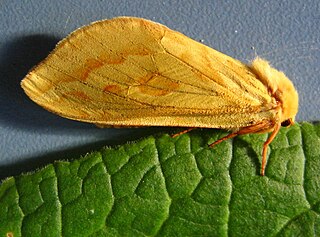
The ghost moth or ghost swift is a moth of the family Hepialidae. It is common throughout Europe, except for the far south-east.
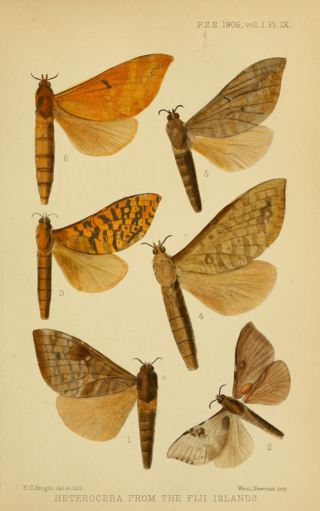
Phassodes is a moth genus of the family Hepialidae. As of 2018, it is monospecific, consisting of the sole species Phassodes vitiensis; this species is very variable. It is found in Fiji and Samoa. The life cycle is unknown but the larva is presumed to feed underground on the roots of plants or decaying matter.

Sthenopis is a genus of moths of the family Hepialidae. There are eight described species found in North America and China.
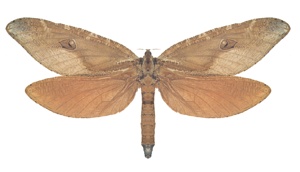
Zelotypia is a monotypic moth genus of the family Hepialidae. The only described species is Z. stacyi, the bentwing ghost moth, which is only found in Queensland and New South Wales, Australia. This is a very large species with a wingspan of up to 250 mm. The larva feeds and pupates in the trunks and branches of Eucalyptus.
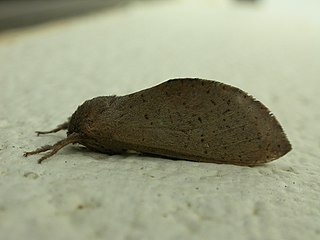
Elhamma australasiae is a moth of the family Hepialidae. It is found along the eastern seaboard of Australia.

Abantiades latipennis, known as the Pindi moth, is a species of moth in the family Hepialidae. It may also be referred to as a swift moth or a ghost moth, as this is a common name associated with Hepialidae. Endemic to Australia and identified in 1932, it is most populous in temperate rainforest where eucalypti are prevalent, as the larvae feed primarily on the roots of these trees. Females lay eggs during flight in a scattering fashion. The larvae live for over eighteen months underground, while adult moths survive for approximately one week, as they have no mouthparts with which to feed. The moths are preyed upon by a number of predators, including bats and owls. Brown in colour overall, males are paler and the identifying silver bars of the male's wings are more prominent than those of the female's, with dark margins. Male adults are generally smaller.
Callipielus salasi is a species of moth of the family Hepialidae. It was discovered in Temuco, Chile at the Carillanca Experimental Station. It was discovered and named by Gaden Sutherland Robinson in his 1977 publication "A Taxonomic Revision of the Genus Callipielus" and readdressed in his 1983 publication "Ghost Moths of South America".
Endoclita purpurescens is a species of moth of the family Hepialidae. It was described by Frederic Moore in 1883 and is known from Sri Lanka. Food plants for this species include Camellia and Cinchona.
Gazoryctra hyperboreus is a moth of the family Hepialidae first described by Heinrich Benno Möschler in 1862. It is known in North America, from New England and Quebec west to the foothills of Alberta.
Gazoryctra novigannus is a moth of the family Hepialidae first described by William Barnes and Foster Hendrickson Benjamin in 1926. It is known in North America, from Quebec, west to the Rocky Mountains and south to Arizona.
Gazoryctra roseicaput is a moth of the family Hepialidae. It was described by Berthold Neumoegen and Harrison Gray Dyar Jr. in 1893. It is known from the mountains of western North America, including Washington, Oregon, British Columbia and Alberta.
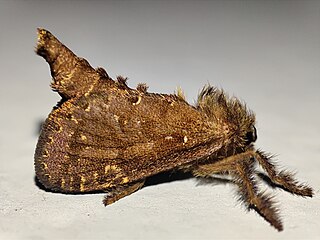
Palpifer taprobanus is a moth of the family Hepialidae. It was described by Frederic Moore in 1887 and is found in Sri Lanka.

Sthenopis pretiosus, the gold-spotted ghost moth, is a species of moth of the family Hepialidae. It was first described by Gottlieb August Wilhelm Herrich-Schäffer in 1856. It can be found in found Brazil, Venezuela and in the eastern United States and south-eastern Canada.
Sthenopis bouvieri is a species of moth of the family Hepialidae. It was described by Oberthür in 1913, and is known from China.
Sthenopis dirschi is a species of moth of the family Hepialidae. It was described by Otto Bang-Haas in 1939, and is known from China.
Sthenopis regius is a species of moth of the family Hepialidae. It was described by Staudinger in 1896, and is known from China.
Sthenopis roseus is a species of moth of the family Hepialidae. It was described by Oberthür in 1912, and is known from China, including Hubei.

Sthenopis thule, the willow ghost moth, is a species of moth of the family Hepialidae. It was described by Strecker in 1875, and is known from Canada and the United States, including Ontario, Quebec and Saskatchewan.
S. purpurascens may refer to:










